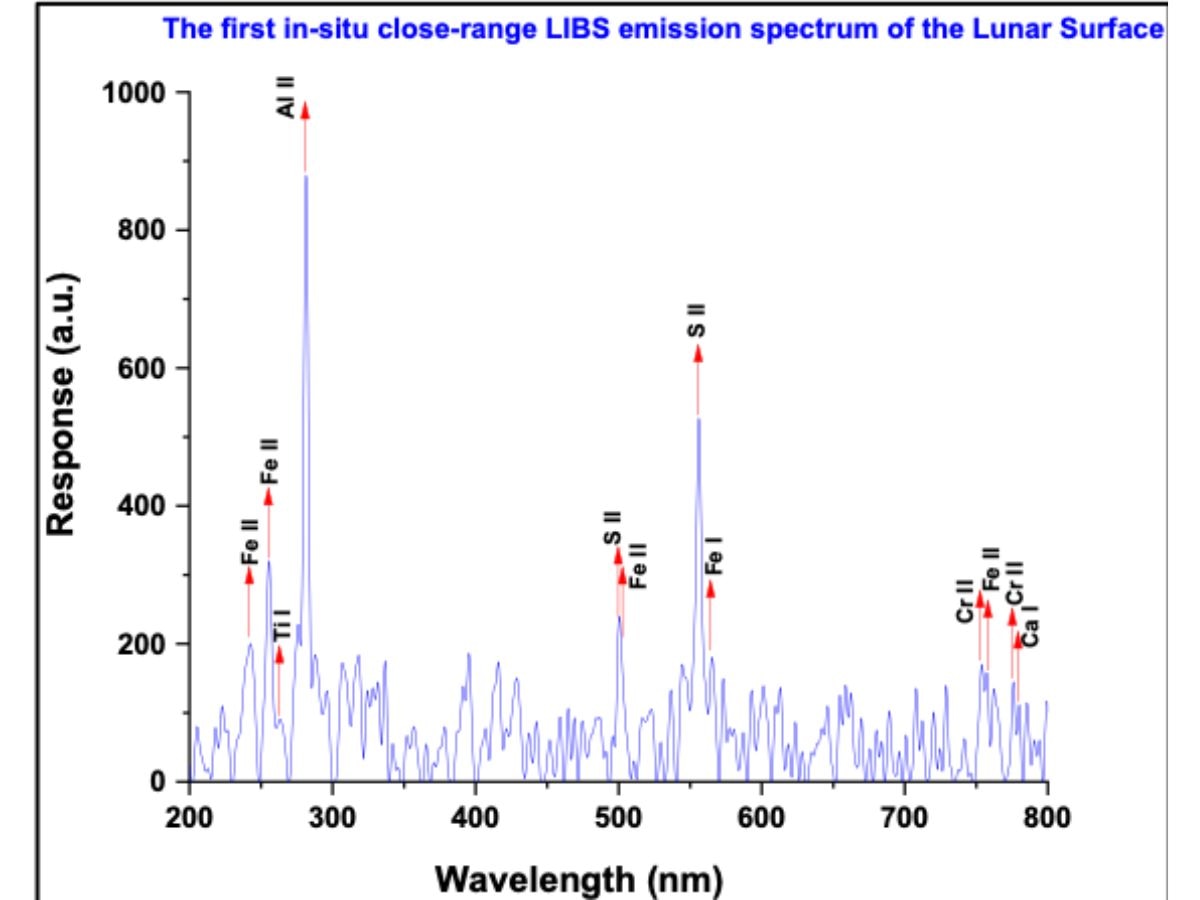Chandrayaan-3’s Pragyan Rover Payload Confirms Presence Of Sulphur On Moon’s South Pole. Know More
Chandrayaan-3: Other elements detected by the Pragyan rover's LIBS on the lunar surface near the Moon’s south pole include aluminium, calcium, iron, chromium, titanium, manganese, silicon, and oxygen.

Chandrayaan-3: The Pragyan rover’s Laser-Induced Breakdown Spectroscope (LIBS) instrument has confirmed the presence of sulphur on the Moon’s south pole. The payload performed first-of-their-kind in-situ experiments to make the discovery. Other elements detected by LIBS on the lunar surface near the Moon’s south pole include aluminium, calcium, iron, chromium, titanium, manganese, silicon, and oxygen, the Indian Space Research Organisation (ISRO) said in a mission update.
The experiments conducted by LIBS undoubtedly confirmed the presence of sulphur on the Moon's south pole. According to ISRO, these experiments were not feasible with the help of instruments onboard orbiters sent in the past.
Chandrayaan-3 Mission:
— ISRO (@isro) August 29, 2023
In-situ scientific experiments continue .....
Laser-Induced Breakdown Spectroscope (LIBS) instrument onboard the Rover unambiguously confirms the presence of Sulphur (S) in the lunar surface near the south pole, through first-ever in-situ measurements.… pic.twitter.com/vDQmByWcSL
LIBS is still performing experiments to detect the presence of hydrogen on the lunar south pole.

What does the graph showing the wavelengths of different elements detected at the Moon's south pole indicate?
The graph shows the wavelength of the plasma light emitted by a certain material on the lunar surface versus arbitrary units (au). Manish Purohit, a former ISRO scientist, who was involved in the Chandrayaan-2 and Mangalyaan projects, told ABP Live that in this graph, the Y-axis represents the relative intensity of the light emitted by a lunar material. He explained that the regions in the graph where there is a large peak indicate a greater amount of a certain element, and the areas where there is a smaller peak indicate a smaller amount of the element.
The wavelengths determine the elements emitting the plasma light. Every element emits a particular spectrum of wavelengths, when irradiated with a laser pulse.
How LIBS works
The function of LIBS is to determine the elemental composition of materials by exposing them to intense laser particles. LIBS focuses a high-energy laser pulse onto the surface of a material on the lunar surface, such as a rock or lunar soil.
The purpose of the laser pulse is to generate an extremely hot and localised plasma from the targeted material. Plasma refers to a mixture of ionised particles.
ALSO READ | Chandrayaan, Apollo, Artemis, Luna – Successful Moon Missions Launched Till Date
There are detectors onboard LIBS, such as charged couple detectors. They detect the plasma light collected from the lunar material, and spectrally resolve it, which means that the detectors define the fine wavelength intervals of the plasma light emitted from the material.
When an element is in its plasma (ionised) state, it emits a characteristic set of wavelengths of light. Analysing this set of wavelengths can help determine the elemental composition of the material.
The Laboratory for Electro-Optics Systems (LEOS), ISRO, Bengaluru, has developed the LIBS payload.







































